Start Your Plan With Constant Flowering Annuals
In your Florida backyard, you can grow a blooming garden to enjoy color every month of the year, and annual flowers are the easiest way to get started. Annual flowers will bloom for you each month, year-round, in every part of Florida: north, central, and south!
In addition, using annual flowers is a cost-effective way to get started gardening and lowers the risk of experimenting with the layout of your planting beds. In fact, whenever you are short on time or are unsure of your final design, start with annuals. We will discuss flowering perennials, but these plants are your easiest start.
Annual Plant- An annual plant is one that germinates, creates flowers, sets seeds, and dies in one growing season. The advantage of annual plants is that they will flower constantly and profusely for their lifetime.
When To Choose Annual Plants
- Choose annual plants if you want constant and brilliant blooms for a place in your garden. Nothing else is as colorful.
- Plant annuals when you want to create seasonal change in the garden. We have beds at the entrance where we create a fresh new color scheme to begin every season.
- Annual plants will provide color anywhere until cold weather comes; in Florida, some will provide several years of flowers.
- Use annuals when you are unsure of your final design and need beautiful growing plants quickly.
- Annuals are productive companion plants for vegetables, attracting beneficial insects and discouraging plant predators.
- Use quick-growing annuals to fill in inevitable bare spots as the seasons progress.
- Mix perennial and annual plants; this allows you the chance to make changes every season while not changing everything.
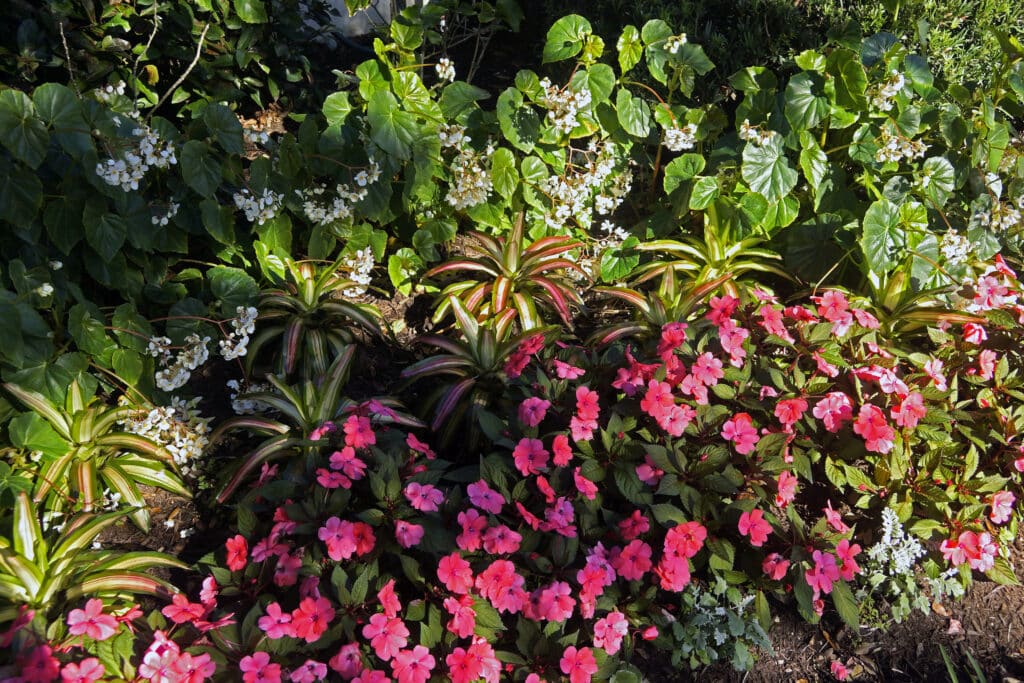
This bed combines large, perennial begonias for height at the rear, followed by tricolor bromeliads, and in the front a vivid coral impatiens for a new look. Next season we will change the color scheme by changing the annuals.
The Florida Gardening Climate-North, Central and South
The three climates are varied, although mild (USDA plant hardiness Zones-8-11); therefore, the varieties of flowers available to you each season will change. Here is what you will need to know.
This USDA Map identifies all of the plant hardiness zones (by county) in Florida; check your location on the map. The USDA map names the counties and will help you if you live in a border county. For example, our two prior Florida gardens were in Hillsborough and Polk Counties, clearly in Zone 9b, in Central Florida. If your garden is in Lake or Volusia County, you are in a border area between Zone 9a and 9b. Check the microclimates of your garden.
The Three Florida Gardening Climates Defined
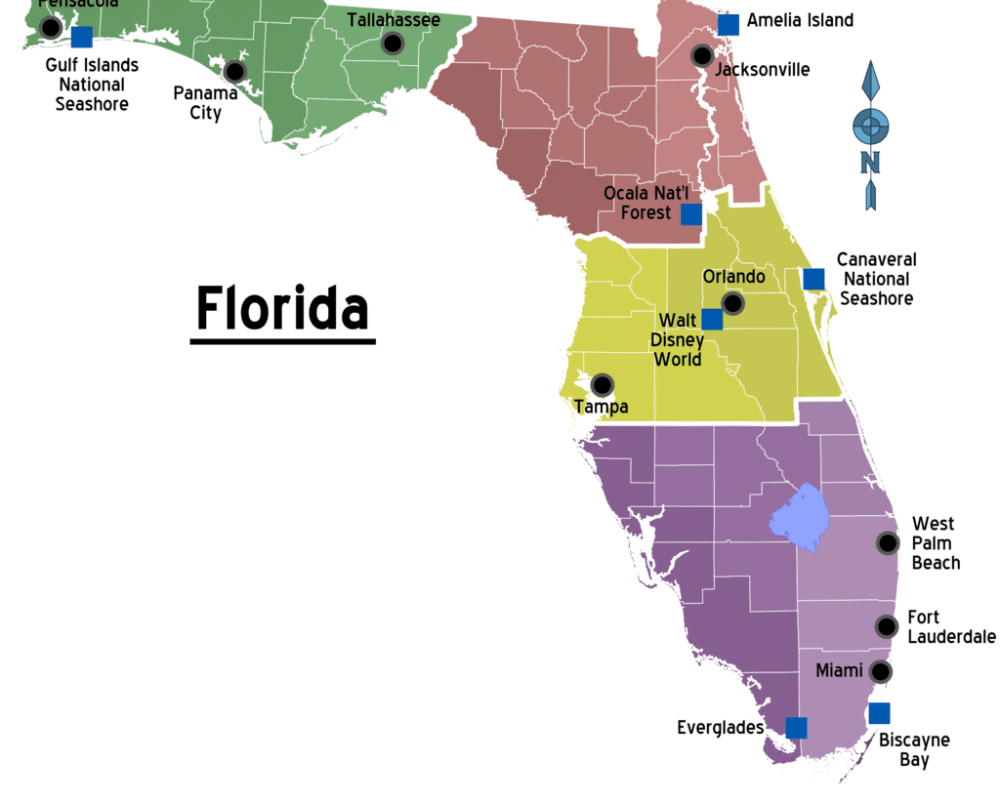
On this map, read North Florida as both east and west of the north, yellow as Central Florida, and South Florida is Purple.
North Florida
Your North Florida garden will be within Hardiness Zones 8a, 8b, and most of Zone 9a. North Florida is also defined as north of State Road 40. You will be able to grow colorful annual blooms for all twelve months of the year, but your greatest plant choices will be available in the summer.
The newest version of the USDA Plant Hardiness Zone Guide (11-15-23) updates the zones as follows: 8b, 9a, and 9b. Like the rest of the nation, Florida is trending warmer.
Central Florida
If your garden is within Central Florida, it will be in Hardiness Zone 9b and located between State Roads 40 and 70. You will have a good selection of annual blooms to use in both winter and summer. Some annuals (tropical perennials) will survive several years in the absence of a significant drop in temperature.
The updated version of Central Florida now shows the hardiness zones as follows: 9b, and 10a.
South Florida
South Florida primarily encompasses Zones 10b, 11a, and 11b (the Florida Keys). South Florida is the most tropical climate in North America; you will have a very wide choice of annual flower choices in the winter, with a smaller but reasonable number to choose from in summer. Also, as many plants we consider to be annual are tropical perennials, some will bloom in your garden for several years, winter and summer.
The 2023 zones are now from 10a to 11b.
How This Works In Different Florida Gardens
Impatiens In Our Florida Gardens
In our former garden in coastal Central Florida location, we and our neighbors grew impatiens, a popular summer annual throughout North America and similar climates elsewhere. They lasted several years when planted in shade or even partial sun. You could see them planted throughout our neighborhood, reaching almost waist-high! Impatiens, a plant valued for its constant and full flowers, is a perennial plant brought from tropical Africa as part of David Livingstone’s expedition to find the source of the Nile and hopefully end the slave trade.
In our South Florida garden, we limit impatiens to the coolest six months of the year where they flourish, but not in our hot, rainy, and humid summers. Note the newer varieties in the article linked below. They allow us to use sunny locations for these flowers in the cool season.
Here is the story of Impatiens, how they were found, their many new varieties, and how to grow them. It’s important to note that impatiens are not just for shade anymore.
How To Select The Right Annual Flowers For The Right Place And Season!
- Annual flowers are popular and readily available. Start with the appearance you want to make.
- Annual plants are predominantly smaller with shallow roots, but there is plenty of variety among sizes. Check the mature heights before you place your plants.
- Like any garden bed, use plants together that have similar growing requirements, water, sun etc.
- Check the best growing season for your plant choice.
- Use your best local garden center; they will offer choices of what is ready to grow in your area.
Here is how to make it easy:
There is plenty of good garden advice for us Florida gardeners, and this piece of research from the University of Florida is a great place to start. ‘Gardening With Annuals In Florida‘ is a complete description of using annual plants in Florida, including a table showing you when to plant (and remove) the flowers in each region of Florida. You can download and save the entire piece, including the useful tables.
This is my list of annual plants that have proven themselves in our various Florida gardens.
‘How to Blend Annual Bedding Plants into the Garden.’ Click on the name of a plant that interests you to learn more about it.
This article is about dealing with Florida’s hot and humid summers and the resultant fungal diseases we fact. ‘Heat Tolerant Annuals For The Dog Days.’ In summer, these are the heat-tolerant annuals we rely on for color until fall.
Some Facts That Will Help You
Light Conditions
The plants you select will be labeled as to their preferred light conditions. Here is how it works.
- Full Sun-more than 6 hours per day.
- Part Sun-4-6 hours of sun.
- Part Shade-3-6 hours, usually before noon.
- Full Shade-dappled shade.
Annuals By Season
In Florida, we divide annuals by the seasons in which they perform best.
- Warm Season Annuals-thrive in our heat but cannot accept cold conditions. Use them from spring to fall.
- Cool Season Annuals-accept our coolest weather but cannot accept our summer heat and humidity. They will bloom dependably from fall to early summer.
Perennial And Biennual Plants
A perennial plant is one that lives for more than two years and will regrow each spring. Check the expected life expectancies of the plants you are interested in. Some have long lives and can be divided to make new plants over time, such as daylilies. Others will only live for a few years.
Biennial Plants
A biennial is a plant with a two year life cycle. Examples of biennial plants include Sweet William –Dianthus barbatus and the edible herb, Parsley.
Companion Plants
Good companion plants to grow next to each other are those with the same growing requirements. They should need the same water, nutrition and light conditions. Companion plants can help one and other remain healthy.
Read this piece on how growing Alyssum next to vegetables can improve yields.
‘How to Get some Beneficial Hoverflies for your Garden.’
Planting and Growing Your Annual Flowers
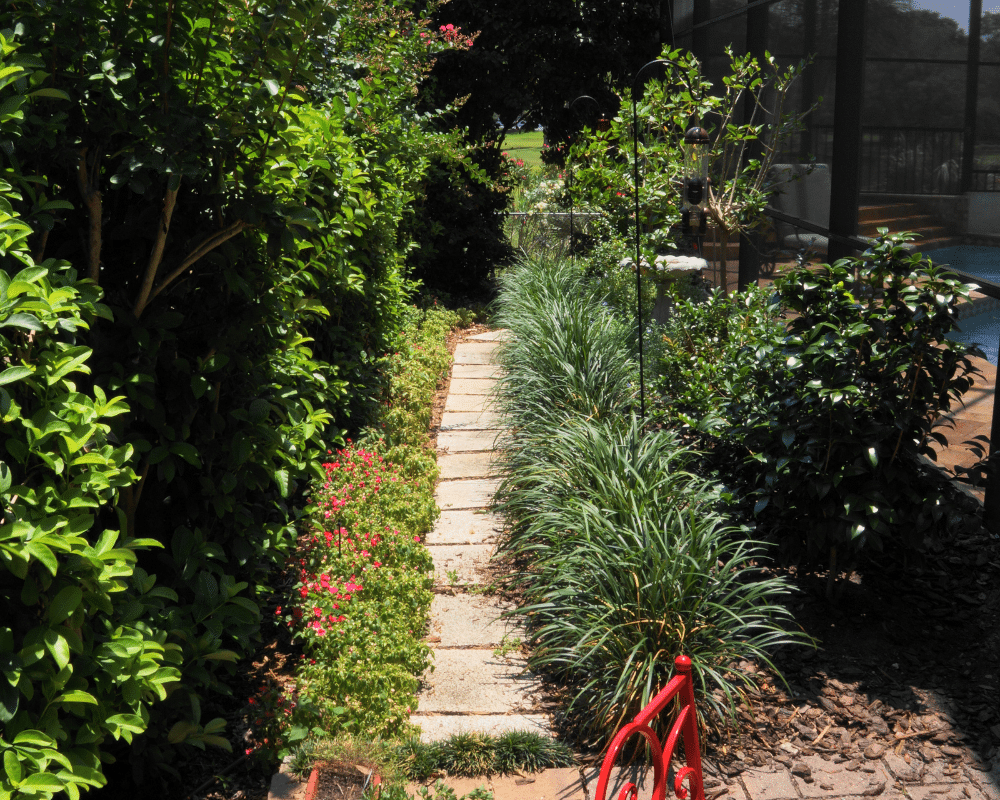
Selecting Plants
Choose compact, dense plants with multiple branches, healthy green color, with buds, and without yellow areas or wildlife. Compact plants with multiple branches and short distance between nodes will produce the most flowers.
Planting
Start with loose soil, the new plant’s roots are small and delicate. Water any dry plants in their pots. Dig a hole to fit the root ball. Remove the plant by slightly squeezing the pot and turning it upside down. Avoid pulling the small plants out of the container. Water the plants as you add them to the garden.
If you are planting long rows of annuals try this: mark your line, measure the distance between plants, using a trowel, dig it into the soil and sweep forward, with a little practice this will help you plant many flowers quickly.
Soil
Your plants will perform best if you prepare your soil ahead of planting day. Amend your soil with compost until it is soft and loose. This will best allow the delicate, spidery roots the best chance to grow.
Water
Water the new plants every day until established; many annuals, especially in hot weather, may need daily watering. Water the roots in the soil and avoid wetting the leaves if possible. Maintain regular water, allowing the plants to completely dry, will stress the plants.
Nutrition
Add a slow-release plant food to the soil as you plant. As they grow, use a liquid feed weekly. We use a fertilizer mixer that works with the garden hose and does the watering and feeding jobs at once.
Mulch
Add one to three inches of aged organic mulch. It can come from wood sources or items like pine straw. Mulch serves three important purposes. It maintains a constant temperature, reduces weeds and maintains moisture.
Maintenance
Many of the newer cultivars of annual plants are bred to be self-cleaning. This means that the spent blossoms are quickly dropped by the plant. In the case of other annuals deadhead the spent flowers and trim off any damaged leaves. Also, prune the plants to produce dense, compact plants which will produce the most flowers.
Pest and Disease Management
Inspect your plants every day. Look for discolored or damaged leaves, turn the leaves over and look for insects. First, remove damaged leaves and the creatures on them. You can wash them off with the pressure of a hose or by wiping. If they increase move on to insecticidal soap. Remove weeds as they grow, weeds can carry pests to the plants.
Annual Flowers We Have Found Useful
Sometimes more than one plant will provide a similar effect and provide the look we want or extend our growing season. Here are some trade-offs we make in the garden. This information is current, in some cases research a few years old will not include the newer, more useful cultivars. If you are not sure use your local County Agricultural Extension service and the advice of your best local plant seller.
Snapdragon or Angelonia
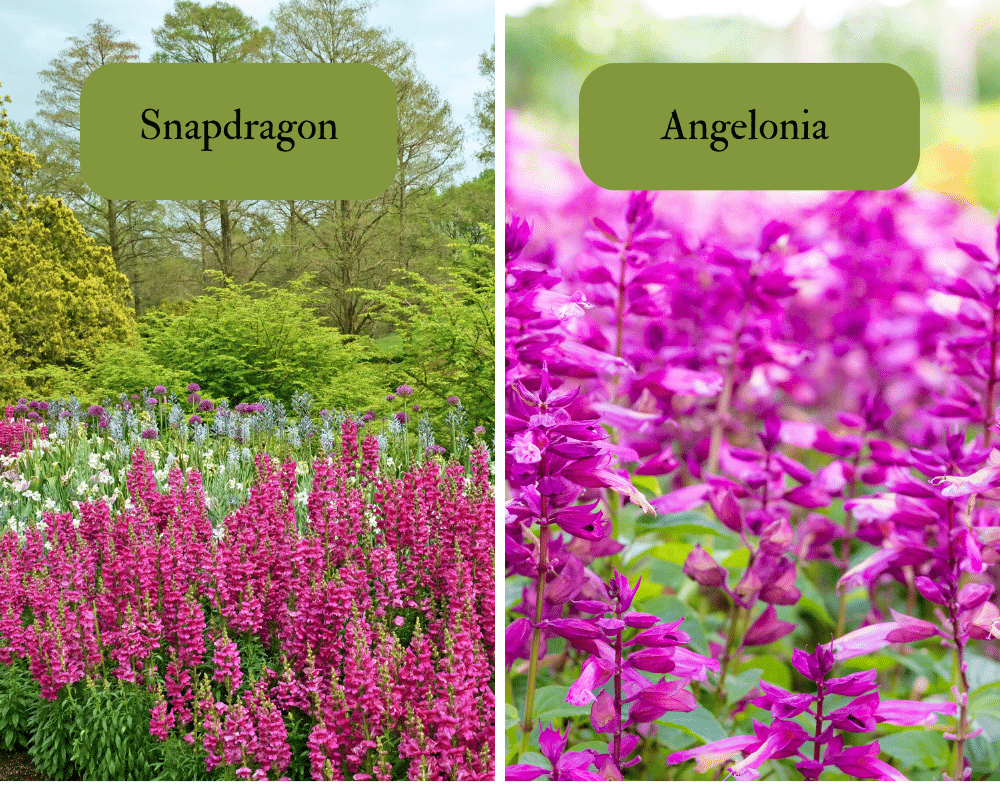
We all love the Snapdragin with its spire-like shape and various color choices. In warmer areas of Florida, its useful season can be very short, which makes it a more expensive choice.
The newer varieties of the Angelonia provide a similar look for a considerably longer period. Sometimes we can keep them attractive for much longer. Use them also in containers.
Impatiens or Annual Vinca
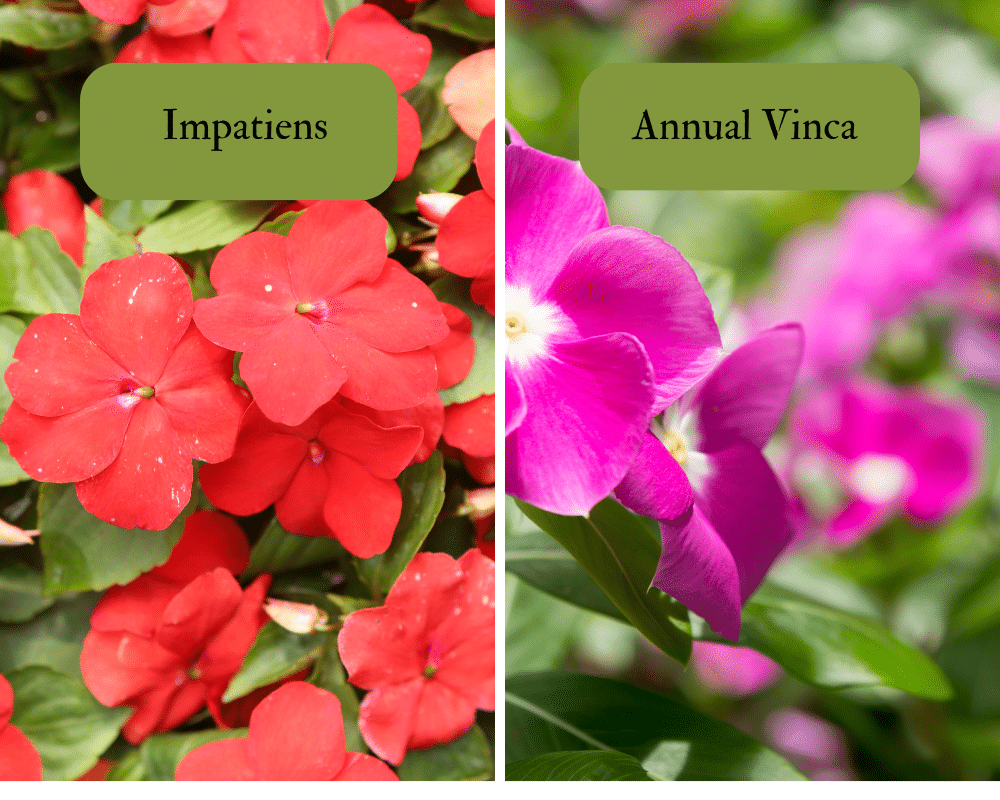
The enormous popularity of Impatiens stems from its ability to display large blooms all day, every day, constantly. Throughout Florida, it is a winter-only plant.
New varieties of Vinca can recreate that floriferous look throughout the summer, even in South Florida. This is a remarkable value for Florida Gardeners.
New varieties of annual Vinca are highly resistant to the fungal diseases common to Florida’s humid summers. Look for varieties labeled Cora and Cora XDR for the best resistance.
Petunia or Petchoa
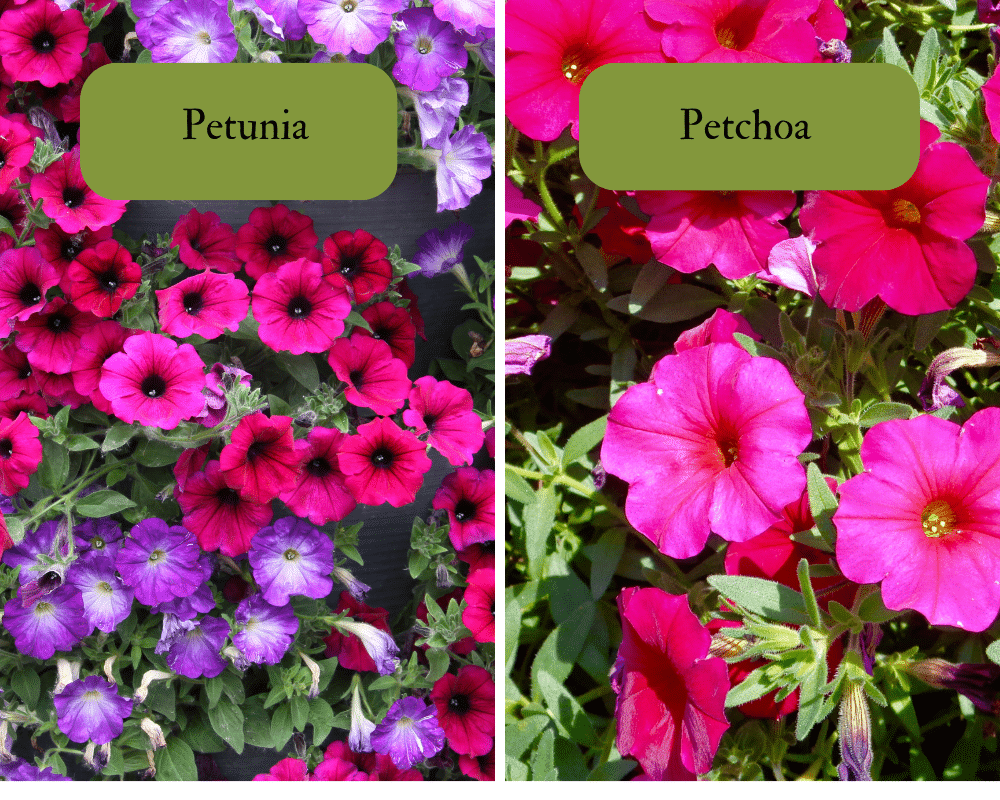
Popular in cool climates all summer long, the Petunia is a winter-season flower throughout Florida. The new Petchoa (Petunia x Calibrachoa) considerably extends the season and is easier to grow in warm years. Pay attention to this new plant. Use it in containers and hanging baskets as you would use Petunias.
In wet weather the Petunia flower is quickly damaged; newer varieties are considerably improved however. The Petchoa does not have this problem and offers a longer growing season. This is a very new product. Keep aware of improvements and new varieties to come.
Alyssum or Barcopa
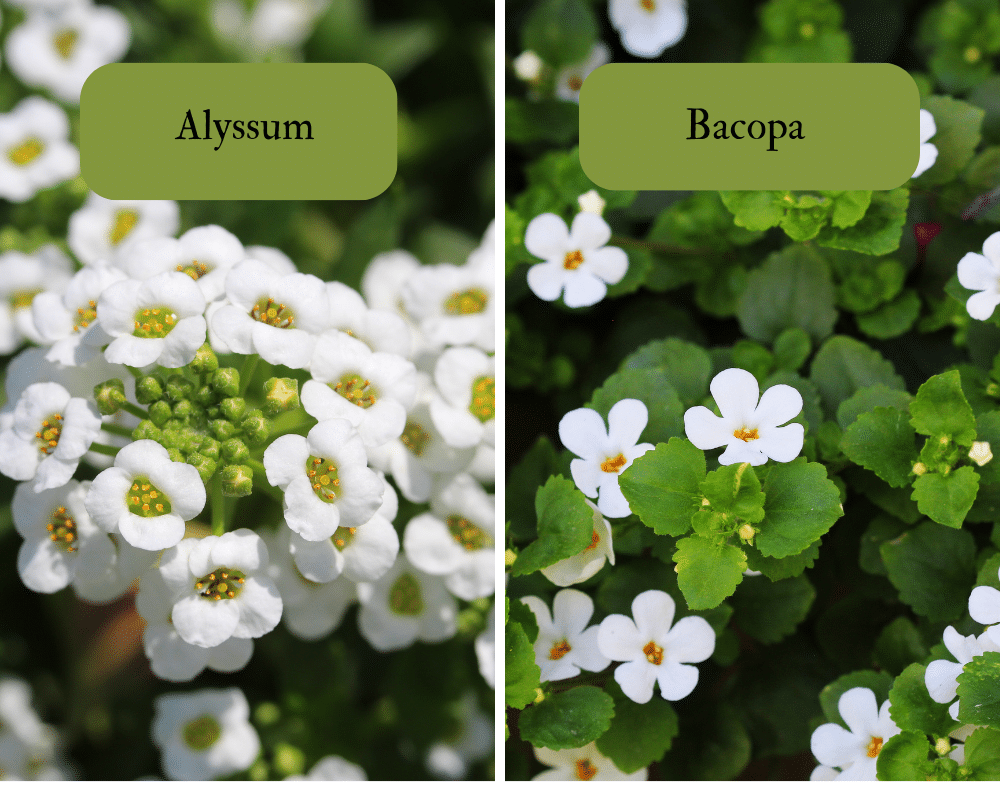
Hardy Alyssum is a desirable edging anywhere during the cool season in Florida. In South Florida, Bacopa appears, so far, to extend the season into our summers.
Alyssum has a tiny, delicate flower, the bloom of the Bacopa is slightly larger. Bacopa is absolutely unable to accept being completely dried out. They both provide an attractive training appearance in containers, hanging baskets and window boxes.
Summary,
Florida is the place to live with blooming flowers all year long. We have learned that the best way to achieve the constantly blooming effect is to combine annual and perennial plants. The annual flowers will bloom every day and the blooming versions of perennial plants will bloom, rest, and rebloom for your garden.
Some perennials are steady repeat bloomers and we will discuss these next to help you design your ideal garden.
‘Our Best Gardening and Landscaping Tips for New Floridians.’
‘Cool Season in South Florida, You’ll Love Herb Garden Heaven.’
It’s January (2024) in The South Florida Garden
Small Florida Gardens
Many Florida communities are arranged to create small gardens. To get the most from your space, if it is small try this. ‘Design your Beautiful Small Garden: 11 Ideas for Success.’
